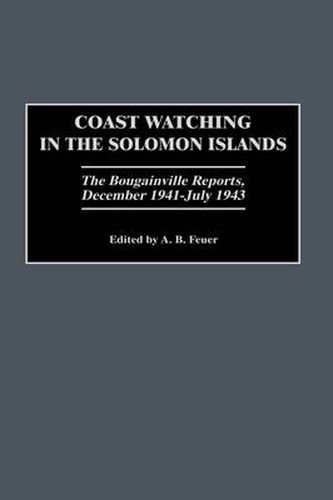Readings Newsletter
Become a Readings Member to make your shopping experience even easier.
Sign in or sign up for free!
You’re not far away from qualifying for FREE standard shipping within Australia
You’ve qualified for FREE standard shipping within Australia
The cart is loading…






This story of the Solomon Island coast watchers - Jack Read, Paul Mason, and others - recounts one of the most successful intelligence operations of World War II. By the time war came to the South Pacific on December 8, 1941, an excellent intra-district communication network had already been established on Bougainville. A daily system of radio reporting was put into effect by Lieutenant Commander Eric Feldt, who noted: Few realized that when the first waves of United States marines landed on the bitterly contested beaches of Guadalcanal, coast watchers on Bougainville, New Georgia and other islands were sending warning signals of impending Japanese air raids almost two hours before enemy aircraft formations appeared over the island . Japanese shipping and aircraft activity was monitored and news of spottings was telegraphed to Guadalcanal headquarters. Information on shipping was directly responsible for the American victory in November 1942, when 12 Japanese transports, loaded with reinforcements, were intercepted and destroyed. Jack Read summarized his activities as follows: Reviewing the course of our operations, coast watching on that most northerly peg of the Solomons had fulfilled its mission long before we were driven out - and to a far greater effect than we realized. During the early and uncertain days of the American struggle to wrest Guadalcanal from the Japanese, the reports and timely warnings from Bougainville were directly responsible for the enemy’s defeat . Admiral William Halsey praised the work of the coast watchers, and said that Guadalcanal saved the South Pacific. This edited account is the remarkable story of Read, Mason, and other coast watchers and their struggles for survival in the Japanese-patrolled jungles of Bougainville.
$9.00 standard shipping within Australia
FREE standard shipping within Australia for orders over $100.00
Express & International shipping calculated at checkout
This story of the Solomon Island coast watchers - Jack Read, Paul Mason, and others - recounts one of the most successful intelligence operations of World War II. By the time war came to the South Pacific on December 8, 1941, an excellent intra-district communication network had already been established on Bougainville. A daily system of radio reporting was put into effect by Lieutenant Commander Eric Feldt, who noted: Few realized that when the first waves of United States marines landed on the bitterly contested beaches of Guadalcanal, coast watchers on Bougainville, New Georgia and other islands were sending warning signals of impending Japanese air raids almost two hours before enemy aircraft formations appeared over the island . Japanese shipping and aircraft activity was monitored and news of spottings was telegraphed to Guadalcanal headquarters. Information on shipping was directly responsible for the American victory in November 1942, when 12 Japanese transports, loaded with reinforcements, were intercepted and destroyed. Jack Read summarized his activities as follows: Reviewing the course of our operations, coast watching on that most northerly peg of the Solomons had fulfilled its mission long before we were driven out - and to a far greater effect than we realized. During the early and uncertain days of the American struggle to wrest Guadalcanal from the Japanese, the reports and timely warnings from Bougainville were directly responsible for the enemy’s defeat . Admiral William Halsey praised the work of the coast watchers, and said that Guadalcanal saved the South Pacific. This edited account is the remarkable story of Read, Mason, and other coast watchers and their struggles for survival in the Japanese-patrolled jungles of Bougainville.